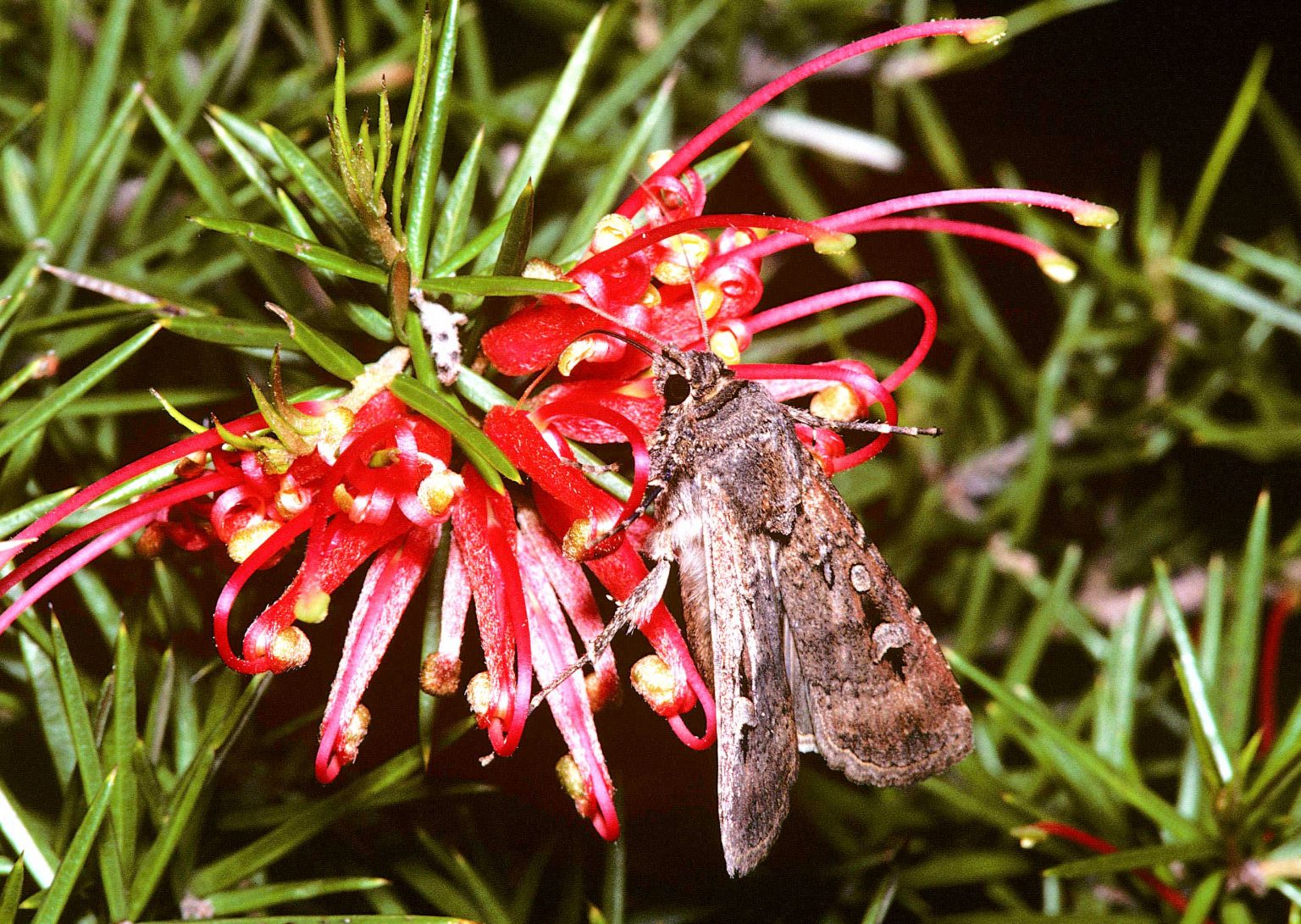The iconic Australian Bogong moth is unique for its remarkable long-distance migration. Professor Eric Warrant explores this feat of navigation.
As I wind my way along a track to the summit of Australia’s highest mountain, I spot the tell-tale river of massive boulders that marks the starting point for my steep descent, flowing down the treeless, flower-strewn slopes. It’s a sunny summer afternoon on Mt. Kosciuszko in January, and I’m on my way to witness one of the most spectacular natural phenomena in the insect world.
Further down the hill, in cave-like hollows and crevices formed deep within the boulders, are tens of millions of Bogong moths, tightly huddled together and coating the stone surfaces in an endless soft brown carpet. There are a dizzying 17,000 moths on every square metre of cave wall, their wings tiling neatly together like the scales of a fish, their heads pushed slightly under the wings of the moth in front. This incredible sight never fails to fill me with wonder, adding so much to the spiritual uplift one always feels when in the Australian Alps.
This multitude of Bogong moths, and many more millions like them, spend summers in a dormant state (known as aestivation) within a restricted number of cool alpine caves dotted across the very highest peaks in Australia (typically above 1,900m). It’s a small geographic region that straddles the south-east corner of New South Wales and the north-east corner of Victoria.
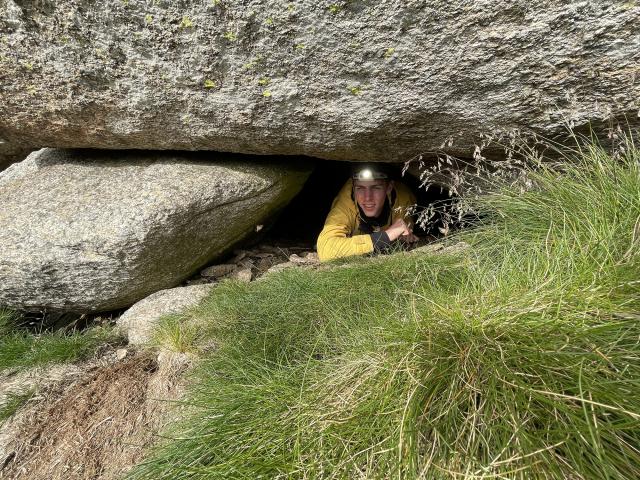
To get there, the moths make an epic spring journey of up to 1,000km, flying night after night towards the mountains. They arrive from many different directions within a vast swathe of territory covering most of southeastern Australia, from South Australia in the west to Queensland in the north. Following two or three months of summer dormancy in the mountains, the same individuals that arrived in the spring leave the caves at the beginning of autumn to make the long return journey to the place of their birth. Once there, they mate, lay their eggs and die.
Their offspring develop underground during the winter, with the larvae feeding on the flush of vegetation provided by seasonal rains. The following spring, adult Bogong moths emerge from the ground to begin the remarkable migratory cycle afresh.
Tracking the Bogong
For the last decade or so, my research group and I have been studying this remarkable migration. What fascinates us is how the Bogong moth knows where to go. How does such a tiny animal, just a couple of centimetres long, manage to fly 1,000km to somewhere it has never been before?
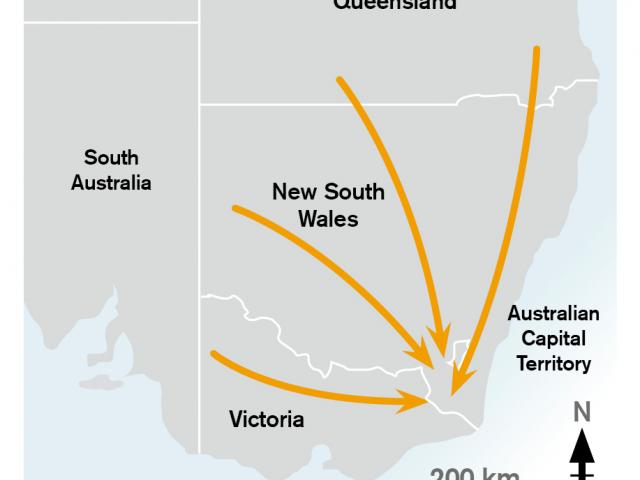
In terms of body lengths, this is like a person circumnavigating the earth almost twice, without any navigational aid apart from what’s inside their own head! How do the moths know which direction to take? And how do they know they have arrived at their destination, and thus when to stop? This knowledge must exist in their brains at birth, being inherited from the many generations of ancestors that have made the same journey before them.
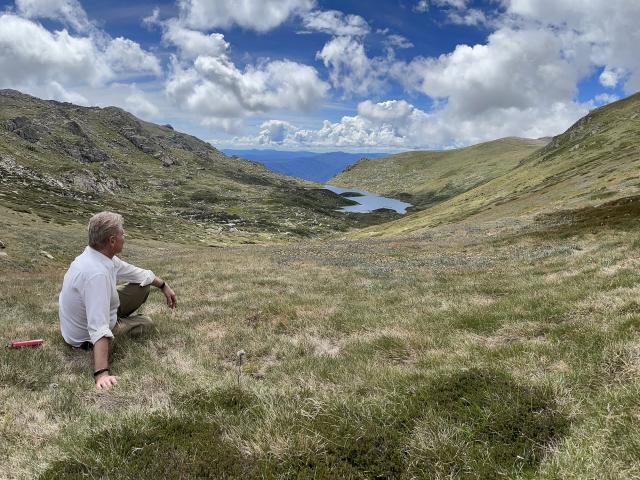
As a nocturnal navigator, the Bogong moth has a number of sensory cues that it can rely on to inform its long journey towards the mountains, and to finally know where to stop. To fly in a specific inherited direction, the moth requires some kind of compass, and at night such compasses may include the Earth’s magnetic field, the stars or the moon. The last of these is not particularly reliable – the size of the moon, its brightness, and the locations and times it’s present in the night sky (if at all), vary substantially from night to night across each month.
However, the constant directional properties of the Earth’s magnetic field are ideal, and our investigations of tethered Bogong moths in flight arenas indeed revealed this to be a major compass – just as it is for many species of night-migratory birds.
More surprisingly though, we’ve recently discovered that Bogong moths also use the southern starry night sky as a major compass to steer flight in their inherited directions. So far as we know, the Bogong moth is the first known invertebrate with this ability – only we humans and night-migratory songbirds can use the stars as a compass for long-distance navigation.
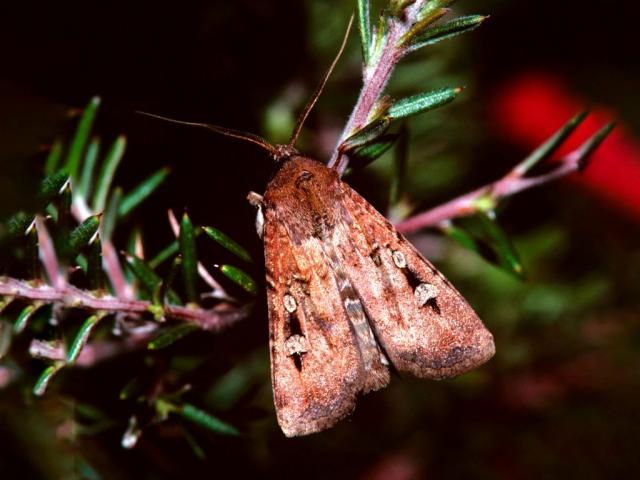
Ingenius invertebrates
Finally, our most recent findings reveal the likely cue used by Bogong moths to pinpoint the exact cave destination at the end of its long journey: a specific odour compound that wafts from the cave, detected by the moth’s incredibly sensitive sense of smell, that guides the moth to its summer resting place.
Despite having tiny eyes, and a brain a fraction of the volume of a grain of rice, the Bogong moth successfully navigates across a vast landscape to find an isolated cave in the Australian Alps, and later reverses this incredible journey to return to its birthplace.
As I contemplate how truly amazing this journey is, and survey the glorious alpine meadows and mountain vistas stretching around me, I feel both humbled and uplifted by the endless marvels of the natural world. How privileged I am to be able to study them!



